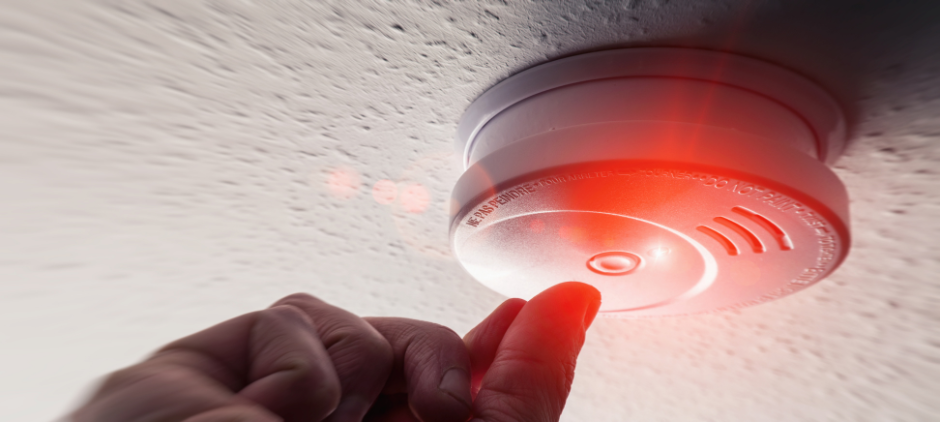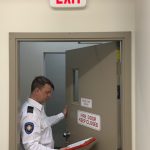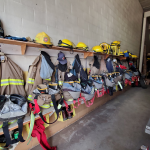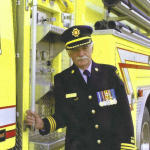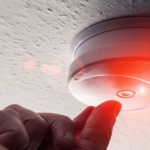Smoke alarms are a crucial piece of fire safety equipment, but they only work if they are maintained.
A working smoke alarm can save lives by alerting people to fires as early as possible. However, not all homes have working smoke alarms. In fact, the National Fire Protection Association (NFPA) reports that from 2014-2018 almost three out of five fire deaths in US homes were caused by fires in properties with no smoke alarms or smoke alarms that failed to operate.
The number of fire-related deaths is rising
The Ontario fire marshal has recently reported on the number of fire-related deaths in Ontario over the past year. According to the data, there were a total of 133 deaths related to fires in 2022, which is the highest number recorded in more than 20 years.
“A very high percentage of fatalities happen in homes without working smoke alarms,” said fire marshal Jon Pegg when asked about the findings. “We don’t need to be losing families. We certainly don’t need to lose able-bodied children who just made it through Christmas, looking forward to New Year’s. It breaks my heart, ”
“I’m standing here as the fire marshal of Ontario, as a father, and as someone who’s been on the scene of fatal fires far too many times, and I’m pleading with each and every one of you,” he said. “Please take the fundamental steps and prevent a fire death. Check your smoke alarms now. It only takes seconds.”
The report also found that most of these deaths occurred during the winter months of November, December, and January. According to the Red Cross, in these colder months, heating equipment like portable space heaters are the leading cause of home fires.
Fire alarm systems in multi-unit buildings
While smaller homes often use smoke alarms, multi-unit housing like apartments often have fire alarm systems. The failure of these systems to alert tenants of danger can also cause death, often in much larger numbers. Keeping in mind the distinction between fire alarms and smoke alarms, where a smoke alarm is capable of sensing smoke and sounding an alarm within a specific area containing fumes, fire alarms are activated by smoke detectors. They sound a widespread alarm that will be heard across the entirety of a building or site.
Many large-scale fires have also been attributed to failing fire alarm systems:
- 2011 Winnipeg Airport Fire in Manitoba
- 2010 University of Toronto Fire in Toronto, Ontario
- 2009 Royal Ottawa Hospital Fire in Ottawa, Ontario
- 2008 Power Plant Fire in Montreal, Quebec.
Shawn Mahoney from the NFPA provides a detailed illustrated guide to fire alarms in a recent article entitled A Guide to Fire Alarm Basics. Its comprehensive illustrations demonstrate how a fire alarm system works and where it can fail. The article shares a visual guide and discusses some of the major components and functions of a fire alarm system.
Educating your community
Education is critical to smoke alarms and fire alarm maintenance and placement. Sharing this knowledge is an excellent way for the fire service to engage with the local community. Managing smoke alarms and fire alarms in buildings involves common sense, yet many times things are overlooked. By creating a checklist, the smallest of details can be tracked:
- Fire alarm systems have daily, weekly, monthly, and annual inspection, testing and maintenance requirements to ensure they work correctly.
- If possible, a fire alarm system should be connected to the local fire department or to a monitoring service which provides 24-hour coverage.
- Fire alarm systems should be integrated with other building systems, such as sprinkler and HVAC systems, to provide comprehensive fire protection.
- Smoke alarms are self-contained units that should be tested monthly.
- Install smoke alarms in each bedroom, outside each sleeping area and on every level of the home.
- Smoke alarms should be equipped with backup batteries in case of power failure.
- Routine fire prevention assessments are an inexpensive form of preventive maintenance
Summary
In the event of a fire, firefighters are trained to respond quickly and safely. But it is also up to citizens to protect themselves, their families, and their tenants by installing and properly maintaining smoke alarms and fire alarm systems when required in their buildings.
Reducing the number of fire-related deaths should be a top priority. By keeping fire safety education at the forefront of everyone’s minds, we can work towards reducing the number of fire-related deaths every year.
If you haven’t done so already, sign up for your free copy of FireWatch. A monthly digital newsletter where we bring the latest industry news to your fingertips. The articles we share have caught our attention, and will keep you in the “know”!
Sign Up Now
Additional information sources:
NFPA Top Fire Causes and Risks
Electrical Fire Safety Outreach Materials


